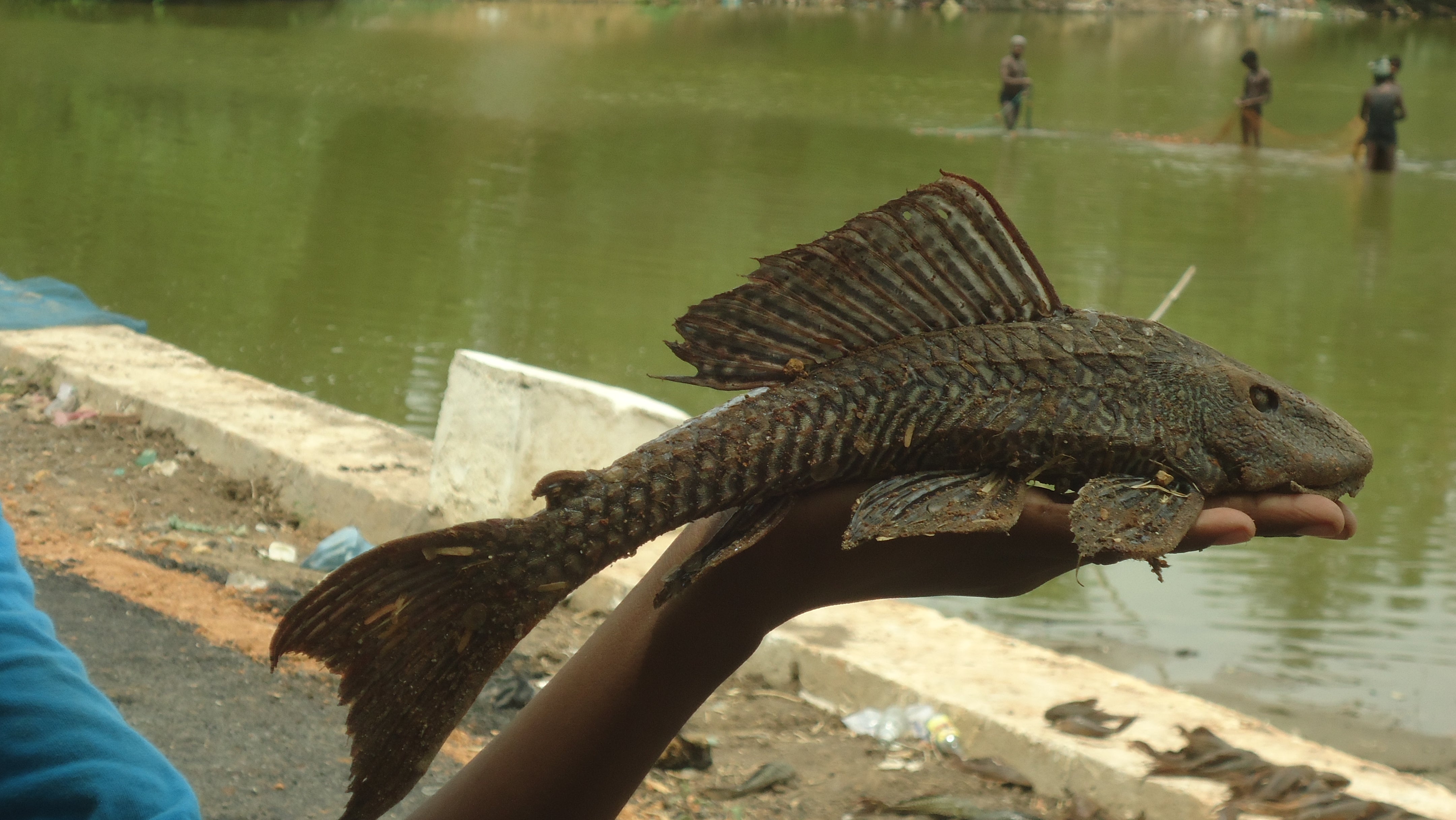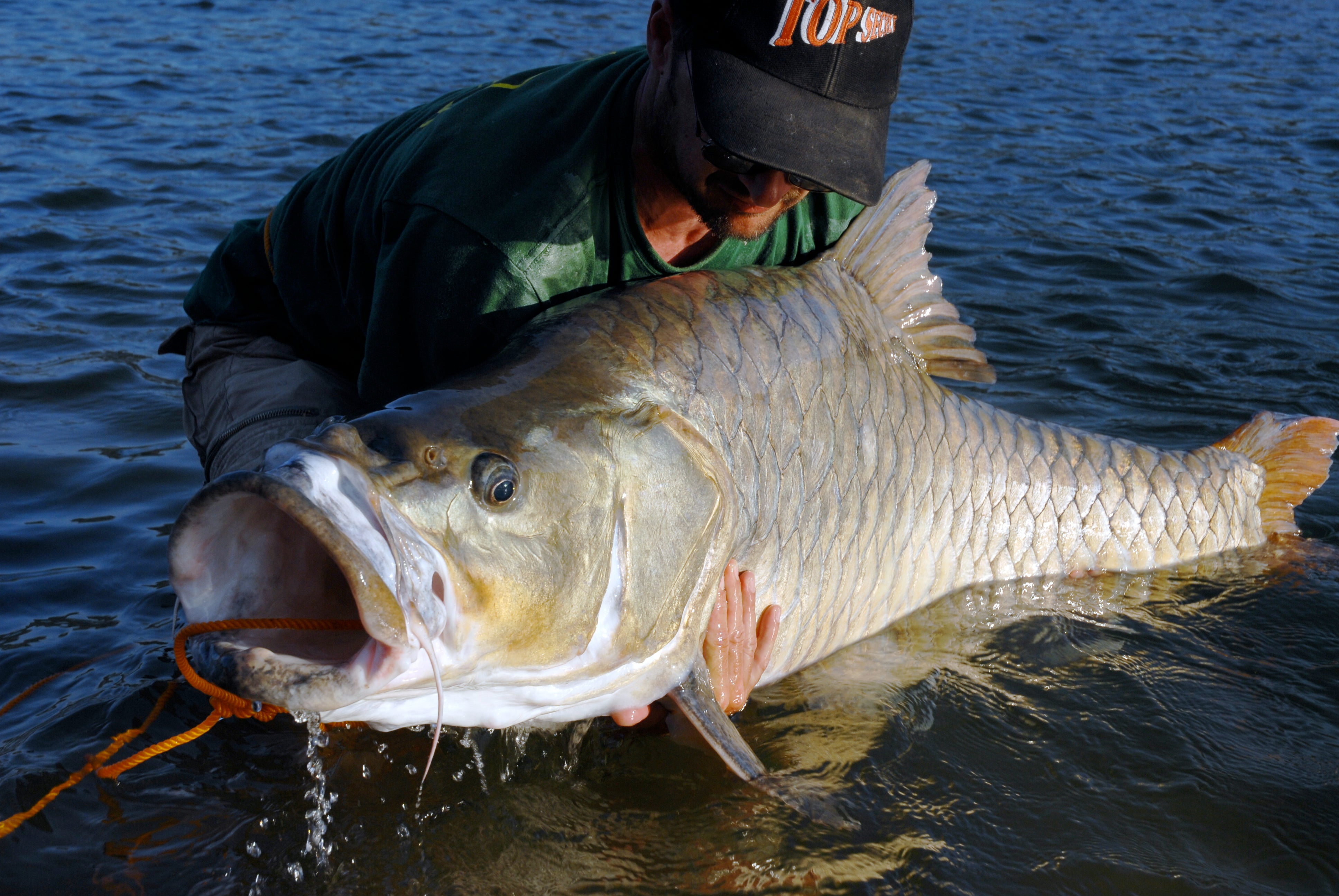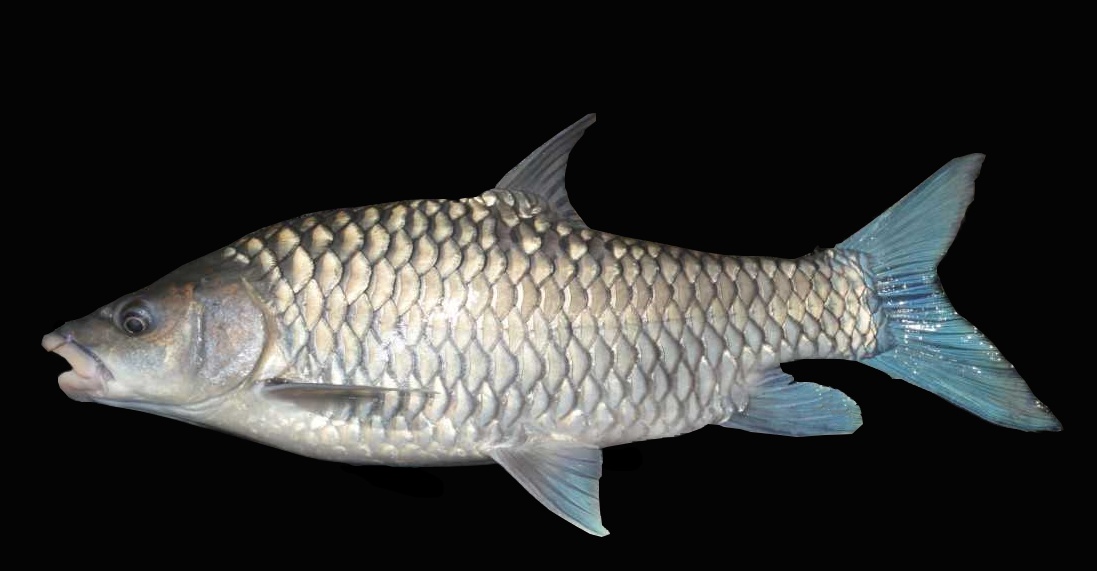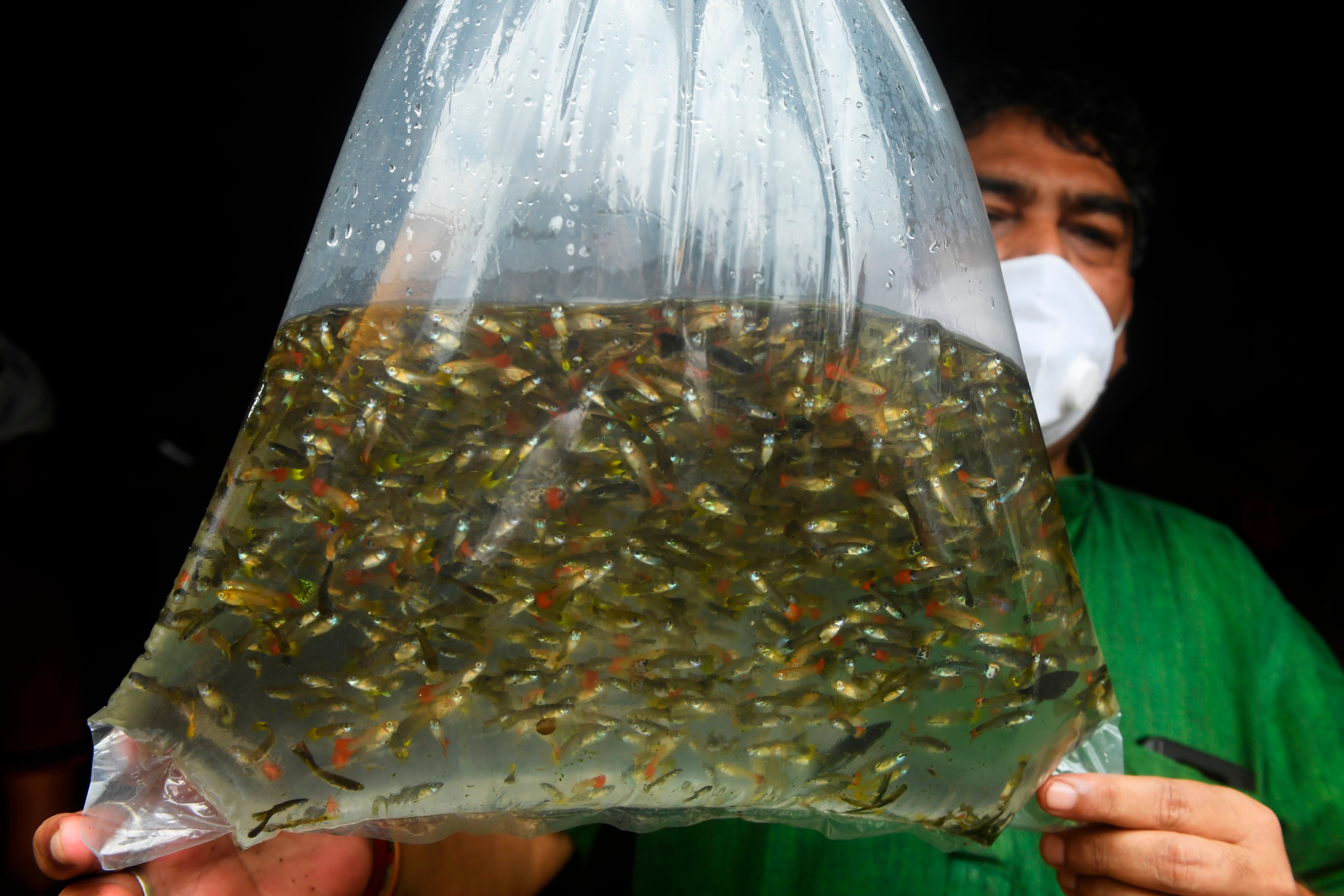The alien fish invading India’s rivers and lakes
When devastating floods hit southern India in 2018 and 2019, almost a dozen exotic fish species escaped from underground breeding centres into the wild. Scientists tell Vishwam Sankaran it’s just one example of how the country’s remarkable endemic biodiversity is under threat

From the time he was about 10, British fisheries scientist Adrian Pinder hoped he could travel to India one day to catch the fish of his dreams.
Growing up reading angling magazines in the UK, he was fascinated by the hump-backed mahseer – a mighty orange-finned freshwater fish that grows to about 1.5m in length and weighs more than 50kg – which is endemic to the Kaveri river in southern India.
“I couldn’t believe they grew to such a size. So they always fascinated me, and I promised myself that one day I would go to India and try to catch one,” Pinder, chair of the Mahseer Trust and director of Bournemouth University Global Environmental Solutions (BUG), tells The Independent.
But in 2010, when a 40-year-old Pinder finally travelled to India to catch a glimpse of the fish, there were hardly any left in the wild – part of a bigger extinction crisis threatening one of the world’s greatest biodiversity hotspots.
During that first trip to a fishing camp in India in 2010, when Pinder fished for seven days along with nine other hopeful anglers, only one of them caught an orange-finned hump-backed mahseer, while the others caught mahseers that looked completely different with bright blue fins.
Because of their trophy status, catch and release anglers from around the world have taken photographs with the majestic hump-backed mahseer, also known as the “Tiger of the Kaveri River”. But after studying photos dating back as far as 1919, Pinder found that anglers only started posing with a mixture of humpbacks and blue-finned mahseer from 1993 onwards.

He started gathering long-term data across multiple sites along the rivers of the region, and it soon became clear that the hump-backed mahseer (Tor remadevii) was not only under a combination of threats from dams, abstraction, and pollution, it was also being replaced by non-native and invasive fish species, including its blue-finned rival.

To put the vulnerability of this megafauna in context, Pinder says, while the International Union for Conservation of Nature (IUCN) classifies other conservation icons such as the giant panda as “vulnerable” and the tiger as “endangered”, the hump-backed mahseer is now “critically endangered”.
Sadly, it joins over 200 of India’s endemic fish species in being on the verge of extinction.
In fact, scientists say the threat of extinction looms for between a third and half of all the endemic fish species in India’s Western Ghats, a verdant range of mountains and wetlands running along much of the country’s western coast, due to the combined forces of the climate crisis, the invasion of these inland water bodies by non-native species, and the limitations of existing conservation laws.
The rise of invasive species has been accelerated by impacts on the ecosystem such as pollution, habitat destruction and fragmentation, explains Dr Biju Kumar, a professor in the Department of Aquatic Biology & Fisheries at the University of Kerala. “This ecosystem system deterioration actually supports the population of alien species that have a better adaptive capacity, while the endemic species are highly sensitive to the water quality changes,” he says.
“If you take the typical cases of invasive fish such as African catfish and suckerfish, they have additional respiratory organs. So even in polluted systems, they can take atmospheric air. They are very hardy and can exploit the situation and will survive,” says Kumar.
Researchers say that while guidelines exist to keep invasive species from entering India, a lack of enforcement and a failure to keep these policies updated as more species are identified means new alien fish will continue to be introduced to local water bodies via trade and farming of exotic species.
“Up till now in the last 4.6 billion years of Earth’s history, we have already had five mass extinctions, and now we are on the threshold of the sixth extinction,” A Ramakrishna, former director of the Zoological Survey of India (ZSI) tells The Independent.
Since the 17th century, Ramakrishna says, invasive species have led to nearly 40 per cent of all known animal extinctions or species getting categorised as threatened, adversely affecting “economic activities, livelihoods, food security, and human health and well‐being”.
In the Western Ghats, scientists have already spotted several signs of this worrying trend – non-native flora and fauna surging in number while endemic species dwindle. “We found that there were a lot of alien invasive species in areas where there were several critically endangered endemic species,” Dr Kumar tells The Independent.
One study led by the aquatic conservation biologist Rajeev Raghavan assessed the effects of massive climate change-induced floods in the region in 2018 and 2019. During the 2018 floods, which claimed over 400 lives in the state of Kerala and were considered the worst in over a century, the region received more than 30 inches of rainfall in a span of about 20 days – twice the average of the time of the year.
The extreme weather event, along with a subsequent flood in 2019, resulted in at least 10 new alien fish species escaping from illegal breeding facilities and aqua-tourism destinations into the natural waters of the Western Ghats, Raghavan says, adding that urgent policy interventions are needed to prevent such incidents in the future. The 10 alien species include the Amazonian arapaima and the alligator gar, which is endemic to the lower Mississippi River Valley in the US.
These species have never been permitted for import into the country, meaning they must have escaped into the wild from illegal breeding and aqua-tourism facilities, highlighting the threat these largely unregulated industries can pose.

While it may have only been a year between the release of these alien fish into the wild and when the study was conducted, researchers say some species had already begun to spread.
A good starting point to address the problem, according to several top scientists, would be to draw up an exhaustive list of the worst invasive alien species around the world and strictly prevent them from entering the country.
“One thing you can do is to have a list of species that are alien, or that can turn invasive, and should not be imported into the country in the future. This can be given to airports, ports, entry and exit points to the country and made sure that these species are not coming in from say 2023 or 2024,” says Raghavan.
While such lists have been produced before by government bodies such as the ZSI, as well as the National Biodiversity Authority (NBA), researchers, including former NBA fellow Sambandam Sandilyan, who has authored several such efforts in the past, say these need to be periodically updated.
And despite existing research highlighting over 150 highly invasive alien plants and animals, including fish, policymakers themselves have been known to import some of the more disastrous exotic species.
Raghavan cites the example of the larvicidal fish Gambusia affinis – better known as the mosquitofish, a native to Latin America – which continues to be imported and deployed as a mosquito control agent in India, despite it featuring in all the lists of invasive alien species put together by the government bodies.

“This is again a cause for concern,” Raghavan says. “Because most vector control organisations in India still educate on introducing the fish for mosquito control, but it is one of the world’s worst invasive species.
“The Delhi government introduced millions of mosquitofish into the Commonwealth Games village in 2010 just before the [games] to control mosquitoes. So even at the highest levels of policymaking, governments and ministries still do not have an understanding about these things.”
The IUCN implicates gambusia as being responsible for extinctions all over the world.
While there is growing data documenting the crisis of invasive fish species, there is less clarity over which government body should be expected to deal with the problem. “Right now, we have the Ministry of Environment and Forest, who are mandated to protect our environment and forest, including conservation, etc. We have the Ministry of Agriculture, animal husbandry, and fisheries, who are mandated to increase production. We have the Ministry of Commerce. Again, their mandate is to increase trade. So we have these three ministries, which have three completely different mandates,” Raghavan says, adding that lack of communication between the ministries is getting in the way of informed decision-making.
“When we go to one ministry, they blame it on the other ministry, saying we are not responsible. This second ministry says this is not our problem, it is somebody else’s problem. But finally, it is nobody’s problem,” he says.
The fisheries scientist calls for the establishment of a new government body under the Ministry of Environment that includes members of different ministries concerned with this issue to address the looming threat.
“It must be a very holistic sort of agency which has members from all these ministries. Unless and until we do that there’s no scope for any sort of improvements in this picture because everyone sees this very individually, they don’t look at the whole picture,” Raghavan says.
Researchers believe informing the public of invasive species and involving local groups at the initial stages after early detection are also essential steps in monitoring the situation on the ground.
Science communication and citizen science have proved to be effective tools in managing invasive species in North America’s Great Lakes, for instance. The Great Lakes Aquatic Nonindigenous Species Information System (GLANSIS), a “one-stop shop” for data on invasive species in the region, has helped bring about policy changes in the US and has relied on local community participation.
“Despite the number of researchers actively looking for invasive species... we never have enough eyes. This is where citizen and community science comes in: the majority of new reports of introduced species come from members of the public who noticed something unusual in their local waterway,” El Lower, a GLANSIS research associate, tells The Independent.
“Whatever is already in the system, it is very difficult to do anything about it. Preventing further introduction is the key. And that should be done at the earliest opportunity,” says Raghavan.






Join our commenting forum
Join thought-provoking conversations, follow other Independent readers and see their replies
Comments